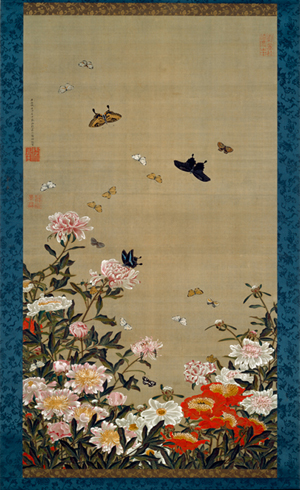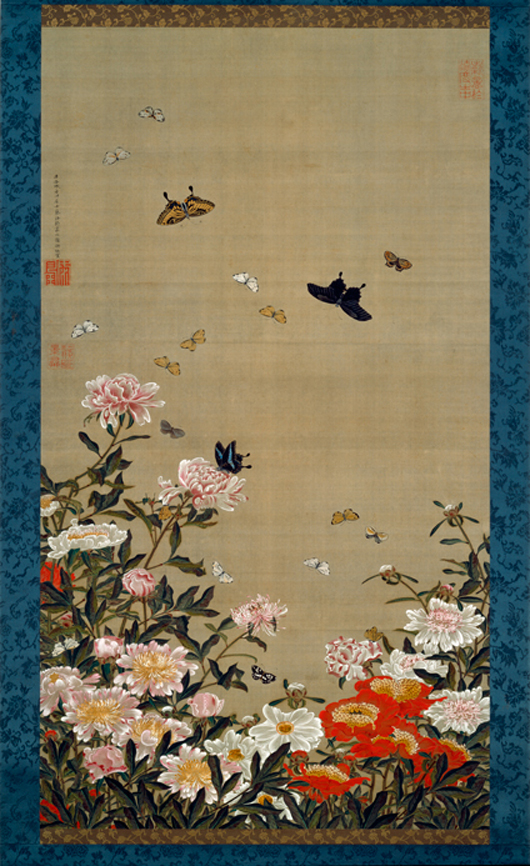
WASHINGTON (AFP) – Thirty bird-and-flower paintings by the Japanese master Ito Jakuchu will go on display this week in Washington, marking the first time the full, fragile collection has traveled overseas.
The National Gallery of Art will show the 30-scroll collection for only one month starting on Friday, part of major celebrations to mark 100 years since Japan gifted the capital’s now celebrated cherry trees to the U.S. capital.
The Imperial Household Agency lent the set of 30 silk scrolls after a six-year restoration effort. The collection, known as “Colorful Realm of Living Beings,” represents a series of meditative themes from nature.
Earl Powell III, director of the National Gallery of Art, said the exhibition was a once-in-a-lifetime opportunity for the public to see “the most important and remarkable collection of flower painting ever in the history of Japan.”
Ito Jakuchu, who was born to a wealthy merchant family in 1716, decided in 1755 to devote himself exclusively to Zen meditation and painting. He spent nearly a decade on the scrolls and once said that it would take 200 years for his works to be understood.
The earliest of the scrolls depicted peonies and butterflies, invoking two classic symbols from Japanese and Chinese thought that are associated respectively with beauty and freedom.
Other scrolls included depictions a magnificent rooster in a blooming garden, of an octopus and fish descending through the water, of a peacock in a dark forest and of birds perched on snowy branches.
Jakuchu produced the paintings through painstaking pigmentation. He employed new techniques that came from China and introduced the color Prussian blue for the first time in Asia, according to experts.
The paintings were initially not for public viewing and instead assisted meditation at the Buddhist monastery of Shokoku-ji in Kyoto.
“The paintings were never intended to be displayed more than a day,” said Yukio Lippit, an expert on Japanese art at Harvard University.
The monastery donated the scrolls to the Imperial Household in 1889 in gratitude for restoration of the building. Since then, the paintings have mostly been enjoyed privately by emperors.
ADDITIONAL IMAGE OF NOTE



